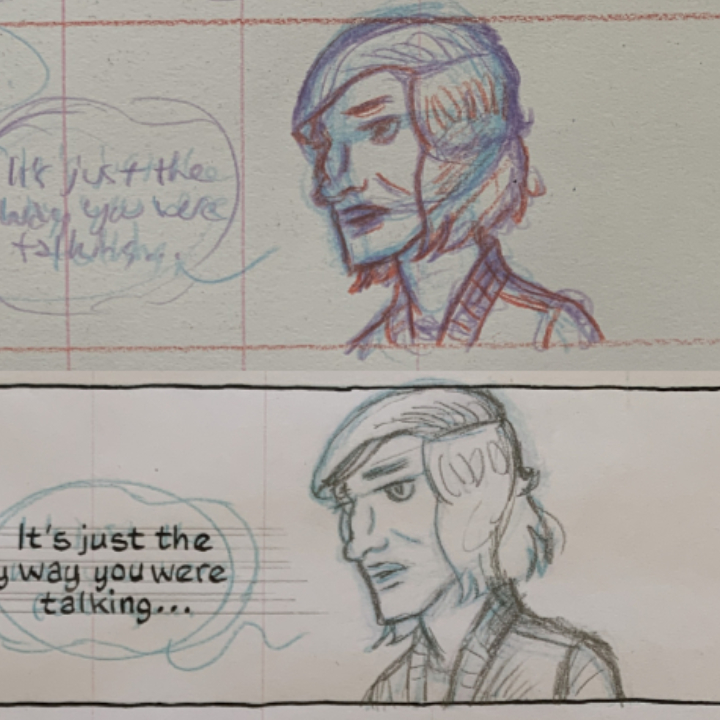my pencilling process
I realized that I have never posted about my full pencilling* process. What follows are the steps that I have learned to help me create a finished page. These are not the “correct” way to create a comic, but for me they are the ones that work.
Let’s take page sixteen of one of the projects that I am working on, The Third Floor.

I started by thumbnailing the entire first chapter. “Thumbnailing” might not be the precise term here since these drawings are pretty big: B5 size paper, about 6.75 x 10″. But essentially, these are just rough notes. They give me a sense of the dialogue and the rhythm. They also give me a sense of the spatial relationships between the characters and what they might be doing. But I don’t stress about those things too much. The goal at this stage is just to get ideas down. Other ideas can come in later in the process. You can see that I went back in months later to cross things out and change the dialogue.
After this stage, I have taken to writing up the dialogue in a text app so that I can check for spelling and tweak the diction and flow.

When I am ready to work on the page itself, I lay out the page and the panels on drawing paper. For The Third Floor, I’ve taken to putting guides for the center line and the thirds. I use these to help with my compositions.

From there, I put down rough pencils based on the original thumbnails. I use a blue pencil to keep everything light, because I know that things will change. I am also trying to make sure that the dialogue fits and the best location for it in each panel.

Then, using colored pencils, I flesh out the figures and setting. I’ve talked about the benefits of using colored pencils before. Basically, they allow me to build the drawing without having to erase. I can chose shapes and lines from one stage to the next. I am not the best drawer and this process helps me feel more confident about what I am doing.

When I feel that I am ready, I lay out the page on another piece of paper. This is a smoother paper for the inks. I ink in the panel borders before I transfer the pencil drawings.

Then, using a light board, I copy over my pencil drawings from the drawing paper. This step allows me to play with the composition again. Sometimes I move around the figures before I trace them or change the position of a word balloon. I use blue pencil again to do this. I sometimes go back in with a graphite pencil if I feel that a drawing needs more work and needs to be nailed down more before I move to the inking stage. I also do the lettering before I do the final inks.

And of course, after all that, I do the inking.
So that’s my pencilling process. Overall, the stages give me a lot of small goals to meet. For me, that makes a finished work more possible instead of facing the final blank page and trying to do it all at once. Also, the steps allow me to keep thinking about all the little choices about composition, dialogue, and flow. Sometimes, working the process leads me to insights that wouldn’t have occurred to me otherwise.
*And yes, I spell “pencilling” with two Ls. I don’t know why my default spelling is so often British.


